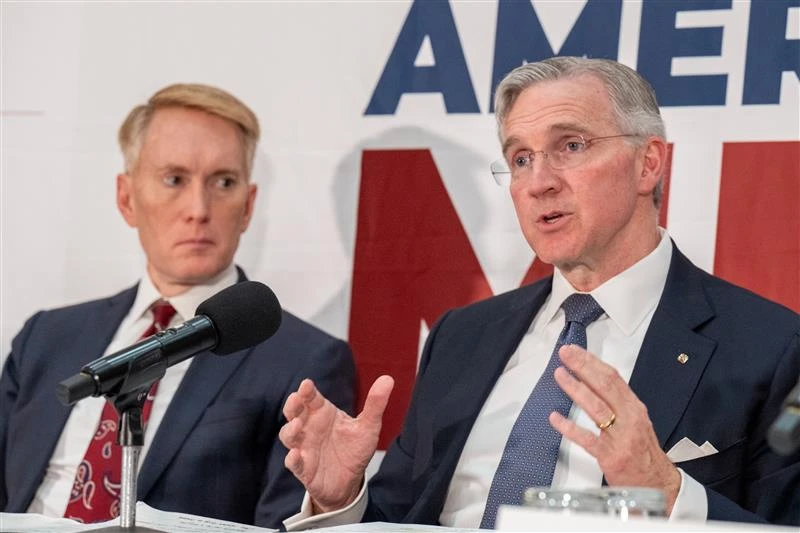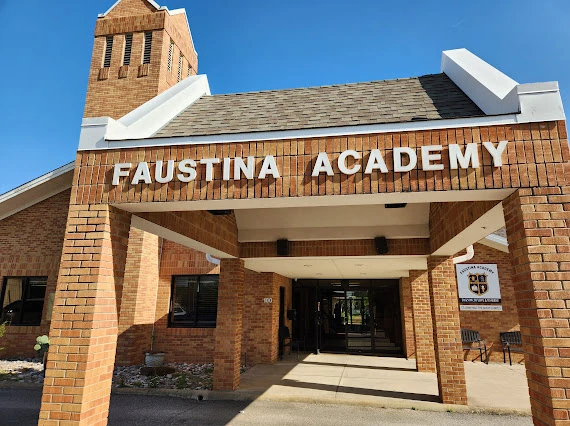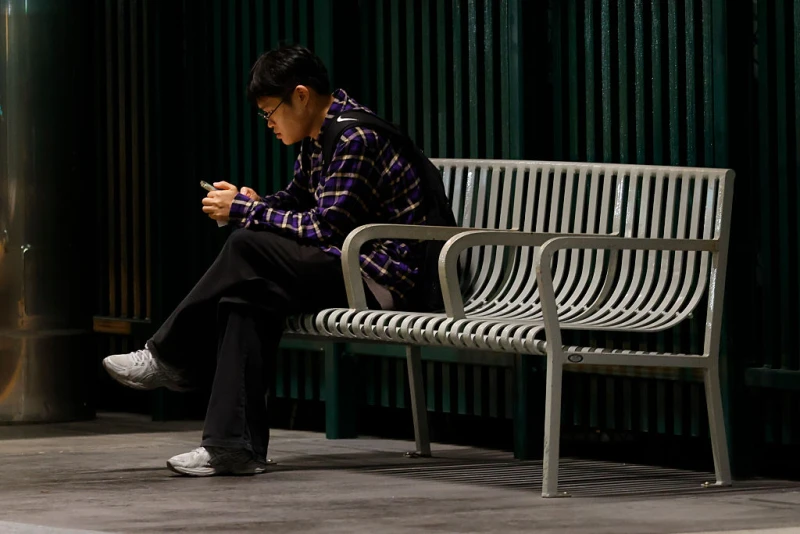![How pregnancy centers help women: Centers provide $450 million in value, report finds #Catholic
Jessica Williams and her 3-year-old daughter were helped by First Choice Pregnancy Services in Las Vegas. / Credit: Photo courtesy of Susan B. Anthony Pro-Life America
CNA Staff, Nov 17, 2025 / 16:11 pm (CNA).
When Jessica Williams became pregnant with another man’s child while she and her husband were separated, her husband pressured her to abort the child.As soon as she took the first abortion pill, mifepristone, she regretted it. “As a nurse, the reality of what I had done had hit me hard,” said Williams, who was nine weeks pregnant at the time. “Here I was working to save lives and about to take one of my own child’s lives.” But as a nurse, Williams knew that in spite of the pill cutting off the progesterone supply to her child, the baby might still be alive. She hadn’t yet taken the second pill, misoprostol, which would expel the child from her body. When she found a pregnancy center, First Choice Pregnancy Services in Las Vegas, staff immediately brought her in for an ultrasound.“They provided a free ultrasound, and that moment changed everything,” she said. Her baby was still alive.First Choice helped her through the abortion pill reversal process, a practice to reverse the effects of mifepristone soon after the woman takes the first abortion pill. Now, her daughter is a “healthy” and “thriving” 3-year-old, Williams said when she shared her story at a Nov. 17 online press conference.Williams is one of many women who have received help from pregnancy resource centers. Pregnancy centers across the U.S. “provided over $452 million in total medical care, support and education services, and material goods in 2024,” according to a Nov. 17 report by the Charlotte Lozier Institute. Pregnancy centers saw a total of 1 million new patients last year, “which is the equivalent of each center serving a new client every day in 2024,” Karen Czarnecki, the head of Charlotte Lozier Institute, said during the press conference. During the press conference, Marjorie Dannenfelser, head of Susan B. Anthony Pro-Life America, called pregnancy centers the “beating heart” of pro-life movement. Pregnancy centers, Dannenfelser said, “are going to the roots of the problem” by providing support for mothers across the board, whether they are struggling with addiction, domestic abuse, homelessness, completing school, or any other challenge. Report debunks false claims about pregnancy centers Dannenfelser noted there are some claims “often unchecked in the media” that call pregnancy centers “fake clinics” or say they “don’t have licensed medical staff.”“This is flat-out false,” Dannenfelser said. “Eight in 10 centers are providing free or low-cost medical services, staffed by over 10,000 medical professionals.” More than 80% of these centers provide ultrasound services, according to the report. Many of the centers also provide STD and STI testing and treatment, as well as abortion pill reversal, like in Williams’ experience. The report also found a 98% satisfaction rate among their clients — something Williams attested to.“They greeted me gently and were nonjudgmental,” Williams said of the staff and volunteers at the pregnancy clinic she went to. “They provided a safe, calm space for me, emotionally, spiritually.”“They gave me information and education without pushing me in any direction,” she continued. “They simply supported me in whatever path I chose.”More than three years later, Williams still keeps up with the women at the clinic.“I’m meeting with these ladies every month still,” Williams said. “They’re just a phone call, a text away, anything I need. I mean, we’re just almost becoming a family now.” Pregnancy centers also provide material, educational, and emotional support. For instance, 92% of centers offer material items to women in need. On average, each pregnancy center distributed six-packs of diapers and five baby outfits every day, according to the report. First Choice “provided diapers, material support, emotional and spiritual support groups, parenting resources, community connections, and just so much practical help in general,” Williams said. “It was a level of compassion that carried me through my entire pregnancy.” Offering material support is a growing effort in the pro-life movement. At pregnancy centers, material support has grown by more than 300% from 2019 to 2024.Many pregnancy centers also offer a variety of other resources, including childbirth classes, breastfeeding consultations, and outreach to victims of human trafficking. “Even right now, they’re doing a monthly get-together — we get to network with other mamas,” Williams said. “We’re [able] to access any resources.” The majority of pregnancy centers also help support women who are recovering from abortions.Williams said the women at the clinic “understood the pressure and fear” she was under to abort. Even after the reversal, her husband drove her to an abortion clinic when she was 16 weeks pregnant “to finish the job,” she said. “The clinic was on the same exact street [where] I saved my baby,” she said. “I couldn’t do it and demanded he take me home. I now know that the strategic location has also saved many other babies.” “They created a safe place for me to heal and feel supported,” she said of the clinic.](https://unitedyam.com/wp-content/uploads/2025/11/how-pregnancy-centers-help-women-centers-provide-450-million-in-value-report-finds-catholic-jessica-williams-and-her-3-year-old-daughter-were-helped-by-first-choice-pregnancy-services-in-las-v.webp)

Jessica Williams and her 3-year-old daughter were helped by First Choice Pregnancy Services in Las Vegas. / Credit: Photo courtesy of Susan B. Anthony Pro-Life America
CNA Staff, Nov 17, 2025 / 16:11 pm (CNA).
When Jessica Williams became pregnant with another man’s child while she and her husband were separated, her husband pressured her to abort the child.
As soon as she took the first abortion pill, mifepristone, she regretted it.
“As a nurse, the reality of what I had done had hit me hard,” said Williams, who was nine weeks pregnant at the time. “Here I was working to save lives and about to take one of my own child’s lives.”
But as a nurse, Williams knew that in spite of the pill cutting off the progesterone supply to her child, the baby might still be alive. She hadn’t yet taken the second pill, misoprostol, which would expel the child from her body.
When she found a pregnancy center, First Choice Pregnancy Services in Las Vegas, staff immediately brought her in for an ultrasound.
“They provided a free ultrasound, and that moment changed everything,” she said.
Her baby was still alive.
First Choice helped her through the abortion pill reversal process, a practice to reverse the effects of mifepristone soon after the woman takes the first abortion pill.
Now, her daughter is a “healthy” and “thriving” 3-year-old, Williams said when she shared her story at a Nov. 17 online press conference.
Williams is one of many women who have received help from pregnancy resource centers.
Pregnancy centers across the U.S. “provided over $452 million in total medical care, support and education services, and material goods in 2024,” according to a Nov. 17 report by the Charlotte Lozier Institute.
Pregnancy centers saw a total of 1 million new patients last year, “which is the equivalent of each center serving a new client every day in 2024,” Karen Czarnecki, the head of Charlotte Lozier Institute, said during the press conference.
During the press conference, Marjorie Dannenfelser, head of Susan B. Anthony Pro-Life America, called pregnancy centers the “beating heart” of pro-life movement.
Pregnancy centers, Dannenfelser said, “are going to the roots of the problem” by providing support for mothers across the board, whether they are struggling with addiction, domestic abuse, homelessness, completing school, or any other challenge.
Report debunks false claims about pregnancy centers
Dannenfelser noted there are some claims “often unchecked in the media” that call pregnancy centers “fake clinics” or say they “don’t have licensed medical staff.”
“This is flat-out false,” Dannenfelser said. “Eight in 10 centers are providing free or low-cost medical services, staffed by over 10,000 medical professionals.”
More than 80% of these centers provide ultrasound services, according to the report. Many of the centers also provide STD and STI testing and treatment, as well as abortion pill reversal, like in Williams’ experience.
The report also found a 98% satisfaction rate among their clients — something Williams attested to.
“They greeted me gently and were nonjudgmental,” Williams said of the staff and volunteers at the pregnancy clinic she went to. “They provided a safe, calm space for me, emotionally, spiritually.”
“They gave me information and education without pushing me in any direction,” she continued. “They simply supported me in whatever path I chose.”
More than three years later, Williams still keeps up with the women at the clinic.
“I’m meeting with these ladies every month still,” Williams said. “They’re just a phone call, a text away, anything I need. I mean, we’re just almost becoming a family now.”
Pregnancy centers also provide material, educational, and emotional support. For instance, 92% of centers offer material items to women in need. On average, each pregnancy center distributed six-packs of diapers and five baby outfits every day, according to the report.
First Choice “provided diapers, material support, emotional and spiritual support groups, parenting resources, community connections, and just so much practical help in general,” Williams said. “It was a level of compassion that carried me through my entire pregnancy.”
Offering material support is a growing effort in the pro-life movement. At pregnancy centers, material support has grown by more than 300% from 2019 to 2024.
Many pregnancy centers also offer a variety of other resources, including childbirth classes, breastfeeding consultations, and outreach to victims of human trafficking.
“Even right now, they’re doing a monthly get-together — we get to network with other mamas,” Williams said. “We’re [able] to access any resources.”
The majority of pregnancy centers also help support women who are recovering from abortions.
Williams said the women at the clinic “understood the pressure and fear” she was under to abort. Even after the reversal, her husband drove her to an abortion clinic when she was 16 weeks pregnant “to finish the job,” she said.
“The clinic was on the same exact street [where] I saved my baby,” she said. “I couldn’t do it and demanded he take me home. I now know that the strategic location has also saved many other babies.”
“They created a safe place for me to heal and feel supported,” she said of the clinic.
Read More![CNA explains: Why does the Catholic Church prohibit ‘gay marriage’? #Catholic
null / Credit: Daniel Jedzura/Shutterstock
CNA Staff, Nov 17, 2025 / 06:00 am (CNA).
Slightly over 10 years after it redefined marriage to include same-sex couples, the U.S. Supreme Court on Nov. 10 declined to revisit that controversial decision, upholding at least for now its ruling in Obergefell v. Hodges that made “gay marriage” the law of the land.A decade after that ruling, nearly a million same-sex couples in the U.S. are participating in what the law now defines as marriage. Yet the Catholic Church has continued to affirm the definition of marriage as being exclusively a union between a man and a woman. That has been the prevailing definition of marriage around the world for at least about 5,000 years of human history, though many societies have allowed polygamy, or multiple spouses, in various forms. The same-sex variant of marriage, meanwhile, only became accepted in recent decades. The Church has held since its beginning that marriage is strictly between one man and one woman. The Catechism of the Catholic Church directs that marriage occurs when “a man and a woman establish between themselves a partnership of the whole of life.” It is “by its nature ordered toward the good of the spouses and the procreation and education of offspring.”Church Fathers and theologians from the earliest days of Catholicism have consistently upheld that marriage is meant to be a lifelong, permanent union between one man and one woman, with St. Augustine explicitly naming “offspring” as one of the blessings of marriage, along with “fidelity” and “the sacramental bond.”Gay marriage a ‘misnomer’ by Church teachingJohn Grabowski, a professor of moral theology at The Catholic University of America, told CNA that marriage in the Catholic Church’s teaching is based on “unity, indissolubility, and [is ordered] toward life,” or the begetting of children.“Those criteria can only be met in a union between a man and a woman,” he said. “They cannot be met in a union between two men and two women. ‘Gay marriage’ is thus a misnomer in the Church’s understanding.”The Supreme Court’s redefinition of marriage, Grabowski argued, was an act of “judicial fiat” rather than a recognition of what marriage actually is. He said the high court was functioning more as a “cultural barometer” reflecting an erroneous shift in perception on what marriage is.“It would be similar to if the court passed a rule saying we could call a square a circle,” he said. “It’s just not based on the reality of the natural world.”The Obergefell ruling came after years of LGBT activist efforts to redefine marriage both within individual states and at the federal level. Advocates had argued that there was no meaningful reason to restrict marriage to opposite-sex couples and that to do so constituted discrimination. Many critics have claimed that the Church’s broader teaching on marriage actually left the door open for same-sex couples to marry — for instance, they argued, by allowing opposite-sex couples to marry even if one or both of the spouses are infertile, the Church implicitly divorces biological childbearing from marriage itself. Grabowski acknowledged that the Church does allow infertile couples to get married (and to stay married if infertility occurs at a later date). But he pointed out that the Church does in fact prohibit marriage for those who are impotent, or constitutionally incapable of intercourse. The key point for the Church, he said, is what St. John Paul II called the “spousal meaning of the body.” The late pope argued that men and women “exist in the relationship of the reciprocal gift of self,” ordered to the communion of “one flesh” of which the Bible speaks in Genesis. The Church’s teaching, Grabowski said, “is based on the natural law. It tells us that the way God designed us is for the good of our flourishing, both as individuals and as the good of society.”Though marriage advocates have continued to criticize the Supreme Court’s decision over the past decade, others have at times suggested a pivot away from directly challenging it at the legal level. In 2017, for instance, Winona-Rochester, Minnesota, Bishop Robert Barron affirmed his opposition to gay marriage but questioned “the prudence and wisdom” of attempting to legislatively outlaw it at that time. The bishop suggested instead that “personal witness and education” were better tools for the current political climate.Grabowski acknowledged that one “could say, realistically, the ship has sailed and the political question is dead.”“But that’s a political judgment,” he said. Catholics should not lose sight of the goal to reestablish correct laws on marriage, he argued.“In terms of something to hope for, pray for, and to the degree that we’re able to, work for it — that’s something Catholics should aspire to.”](https://unitedyam.com/wp-content/uploads/2025/11/cna-explains-why-does-the-catholic-church-prohibit-gay-marriage-catholic-null-credit-daniel-jedzura-shutterstockcna-staff-nov-17-2025-0600-am-cna-slightly-over-10.webp)



![Arizona man sentenced to prison after hoax bomb threats at Christian churches #Catholic
null / Credit: Chodyra Mike 1/Shutterstock
CNA Staff, Nov 11, 2025 / 11:40 am (CNA).
An Arizona man will serve more than half a decade in prison after he carried out multiple hoax bomb threats at churches in the western U.S.The U.S. Department of Justice said in a press release that 46-year-old Phoenix resident Zimnako Salah would spend six years in prison after his 2025 conviction in the terror plot.From September to November 2023 Salah “traveled to four Christian churches in Arizona, California, and Colorado” with black backpacks, according to the Department of Justice. At two churches he was turned away by security, while at two others he “planted” the backpacks, causing congregants to believe they contained bombs, the Justice Department said.Though the planted backpacks were in fact hoaxes, Salah reportedly had “been building a bomb capable of fitting in a backpack,” the department said. FBI investigators said they seized “component parts of an improvised explosive device” from a storage unit being rented by Salah.Salah also had been actively searching for “extremist propaganda online,” the government said, including searches for videos such as “infidels dying.”The jury that convicted Salah in 2025 found that he “targeted the church because of the religion of the people who worshipped there, making the offense a hate crime.”U.S. District Judge Dena Coggins levied a $10,000 fine against Salah, telling him he “failed to take responsibility for [his] actions.”U.S. Attorney Eric Grant said Salah’s ultimate goal appeared to be “many deaths and injuries.”“Thanks to the action of church security, local law enforcement, and the FBI, this defendant was stopped before he had a chance to carry out the crimes he sought to commit,” he said.Assistant Attorney General Harmeet Dhillon, meanwhile, said in the press release that criminals “who target people because of their faith will face the full force of federal law.”“The Department of Justice will continue to protect the rights of all people of faith to worship and live free from fear, and we will hold accountable anyone who threatens or harms them,” she said.](https://unitedyam.com/wp-content/uploads/2025/11/arizona-man-sentenced-to-prison-after-hoax-bomb-threats-at-christian-churches-catholic-null-credit-chodyra-mike-1-shutterstockcna-staff-nov-11-2025-1140-am-cna-an-arizona-man-will-se.webp)












![Alabama executes man by nitrogen gas after Supreme Court denies request for firing squad #Catholic
The state of Alabama on Oct. 23, 2025, executed convicted murderer Anthony Boyd by nitrogen gas just hours after the U.S. Supreme Court refused to consider requiring the state to execute him by firing squad instead. / Credit: Alabama Department of Corrections via AP, File
CNA Staff, Oct 24, 2025 / 11:32 am (CNA).
The state of Alabama on Thursday executed convicted murderer Anthony Boyd by nitrogen gas just hours after the U.S. Supreme Court refused to consider requiring the state to execute him by firing squad instead.Boyd reportedly took around 20 minutes to die from the execution method, according to the Associated Press. The news wire said he “clenched his fist, raised his head off the gurney slightly, and began shaking,” after which he became still but continued with a series of “heaving breaths” for “at least 15 minutes.”The Alabama man was convicted of capital murder in the 1993 killing of Gregory Huguley in Talladega County. Huguley was taped up, doused with gasoline, and set on fire. Boyd proclaimed his innocence until the last minutes of his life. “I didn’t kill anybody. I didn’t participate in killing anybody,” he said on Oct. 23 prior to being executed. The protracted execution came on the same day that the U.S. Supreme Court refused to consider whether the execution by nitrogen gas violates the Eighth Amendment’s prohibition on cruel and unusual punishment. Nitrogen gas is a relatively new execution method in the U.S. In January 2024 Alabama executed Kenneth Smith with gas, the first time in U.S. history that such a method was used. Witnesses said Smith writhed for several minutes while being administered the gas and was observed breathing for a considerable amount of time during the execution itself. Advocates have warned that the process is drawn-out and painful for victims of execution. Boyd had asked the U.S. Supreme Court to consider requiring Alabama to execute him by firing squad. The Supreme Court declined to consider the case.In a scathing dissent ahead of the execution, Justice Sonia Sotomayor accused the high court of “turn[ing] its back” on Boyd and on the Constitution. Sotomayor, who was joined by Justice Elena Kagan and Justice Ketanji Brown Jackson, pointed to several other executions by nitrogen gas, including Kenneth Smith’s, noting reports that inmates have been seen “violent[ly] convulsing, eyes bulging, [and] thrashing against the restraints” while they are killed. All condemned prisoners suffer “distress” ahead of their executions, Sotomayor said. But drawn-out methods of execution like that of nitrogen gas create suffering “after the execution begins and while it is being carried out to completion.”Prisoners are not guaranteed a painless death under the Eighth Amendment, Sotomayor acknowledged.“But when a state introduces an experimental method of execution that superadds psychological terror as a necessary feature of its successful completion, courts should enforce the Eighth Amendment’s mandate against cruel and unusual punishment,” she said.Ahead of Boyd’s execution, the anti-death penalty group Catholic Mobilizing Network said capital punishment “remind[s] us how critically important it is that we include the abolition of the death penalty in our respect life advocacy.”“May we see the dignity of [Boyd] and of every individual sentenced to death, remembering always that no person is defined by the worst thing they’ve ever done,” the group said.](https://unitedyam.com/wp-content/uploads/2025/10/alabama-executes-man-by-nitrogen-gas-after-supreme-court-denies-request-for-firing-squad-catholic-the-state-of-alabama-on-oct-23-2025-executed-convicted-murderer-anthony-boyd-by-nitrogen-gas-j.webp)



![Missouri court says man can sue St. Louis Archdiocese over abuse he repressed for decades #Catholic
The Cathedral Basilica of St. Louis. / Credit: legacy1995/Shutterstock
CNA Staff, Oct 16, 2025 / 11:48 am (CNA).
A Missouri appeals court has ordered that an alleged victim of clergy sexual abuse can sue the Archdiocese of St. Louis, ruling that an arcane aspect of bankruptcy law does not negate the archdiocese’s potential liability for abuse that the plaintiff allegedly repressed for decades.The case touches on both the complex character of U.S. bankruptcy statutes as well as the often-protracted nature of abuse allegations, which frequently only come to light years or decades after the abuse is alleged to have occurred. In its Oct. 14 ruling, the Missouri Court of Appeals, Eastern District, said the alleged victim, John Doe, claims to have been abused at the St. Joseph’s Home for Boys in the late 1980s. Doe alleges that Father Alexander Anderson, who was assigned as a counselor to the home, sexually abused him; the plaintiff said he “reported the abuse [but] no action was taken,” according to the court. Doe “alleged he repressed his memory of the abuse until 2016,” the court said. He ultimately filed suit against the archdiocese in August 2022. The archdiocese argued in response that Doe’s abuse claim was effectively negated by two bankruptcy claims he had filed in 2008 and 2009. U.S. law dictates that when debtors file for bankruptcy, they create “an estate that includes nearly all of the debtor’s legal or equitable interests in property,” including legal causes of action. The archdiocese claimed that since Doe did not list his abuse claims as “exempted assets” in his bankruptcy proceedings, they became part of that “estate” and can only be administered by the trustee that handled those proceedings. The appeals court rejected the archdiocese’s argument, reversing a lower court decision and holding that Doe’s “cause of action” only arose when he said he remembered the alleged abuse in 2016, “well after” his bankruptcy filings. Doe’s standing to sue “did not accrue [when] the sexual abuse was allegedly committed” but rather when it was “capable of ascertainment,” the court held. The court’s ruling cited Missouri Supreme Court precedent, which holds that, in some cases of abuse, “the victim may be so young, mentally incompetent, or otherwise innocent and lacking in understanding that the person could not reasonably have understood that substantial harm could have resulted from the wrong.”The St. Louis Archdiocese did not immediately respond to a request for comment on the ruling on Oct. 16. This is not the first instance in which the archdiocese has been held accountable for abuse allegations that an alleged victim claimed to have repressed for decades.In 2023 the archdiocese agreed to pay a $1 million settlement to a man who said he was abused by Father Gary Wolken in the mid-1990s but repressed the memories until he was an adult. Wolken was in prison from 2003 to 2015 for sexually abusing another boy in the St. Louis area from 1997 to 2000.](https://unitedyam.com/wp-content/uploads/2025/10/missouri-court-says-man-can-sue-st-louis-archdiocese-over-abuse-he-repressed-for-decades-catholic-the-cathedral-basilica-of-st-louis-credit-legacy1995-shutterstockcna-staff-oct-16-2025.webp)



![Brooklyn usher murdered in subway remembered as ‘tremendous man of faith’ #Catholic
Nicola Tanzi. / Credit: Photo courtesy of Deacon Anthony Mammoliti
CNA Staff, Oct 10, 2025 / 15:37 pm (CNA).
A Catholic man who served as an usher at his Brooklyn parish before he was killed in a brutal attack in a city subway is being remembered as a “good soul” with a “tremendous” faith in Christ.Sixty-four-year-old Nicola Tanzi was killed on Oct. 7, when police say 25-year-old David Mazariegos beat him to death in the Jay Street-MetroTech station in Brooklyn. He later died at New York-Presbyterian Brooklyn Methodist Hospital. New York City Police Commissioner Jessica Tisch described the attack as “horrific.” Police were able to apprehend the suspect using photos and a physical description transmitted through their phones, Tisch said. Mazariegos has reportedly been arrested multiple times before. U.S. Transportation Secretary Sean Duffy said on X that state Gov. Kathy Hochul “has blood on her hands” over the death.“Nicola Tanzi’s life was taken by another repeat offender roaming New York’s streets freely,” Duffy wrote. ”New York needs leaders who will back the blue and make America’s transit system safe again.”Victim mourned as a ‘simple, good person’Those who knew Tanzi have mourned his death in the days following his murder. Deacon Anthony Mammoliti told CNA in an interview on Oct. 10 that Tanzi was “probably the most Christ-like parishioner I’ve encountered.” Mammoliti serves at St. Dominic’s Parish in Bensonhurst where Tanzi attended. Tanzi served as an usher there at the Italian Mass for at least 10 years, the deacon said. “He was a man who would give of himself,” Mammoliti said. “In his civilian job, he would often, without hesitation, switch shifts to allow married colleagues to have family time. When I engaged with him in the parish, it was always with a congenial smile.”Tanzi would regularly greet elderly parishioners with a “Buon Giorni!” and “Come Stai!” while holding the door for them, Mammoliti said. The deacon said the parish is in shock over the news. “We’re all in a state of disbelief. The old expression, ‘Bad things happen to good people,’ that’s the first thought that came to mind,” he said. Deacon John Heyer of Sacred Hearts and St. Stephen Catholic Church in the city’s Carroll Gardens neighborhood told CBS News that Tanzi was “definitely a good person. Like, a simple, good person.”“[He was the] type of guy who went to work and came home and was part of different community organizations,” Heyer said. “Especially those related to his family’s heritage and roots in Mola di Bari, Italy.”Mazariegos, the suspect in the killing, reportedly has multiple criminal cases open against him throughout the city. He allegedly admitted to the killing afterward. Mammoliti said Tanzi, a “tremendous man of faith” with a “good soul,” had he survived the assault, would have forgiven his assailant. “He would have done what he normally did, which was to be a good Christian,” he said.“Your first initial reaction [upon hearing the news] is, you know, eye for eye, tooth for tooth,” the deacon admitted. “But we’re called to be people of faith. We’re called to emulate the teachings of the Gospel.” “We would honor Mr. Tanzi if we would live up to what Jesus teaches us, which is to forgive our enemies.”](https://unitedyam.com/wp-content/uploads/2025/10/brooklyn-usher-murdered-in-subway-remembered-as-tremendous-man-of-faith-catholic-nicola-tanzi-credit-photo-courtesy-of-deacon-anthony-mammoliticna-staff-oct-10-2025-15.webp)







